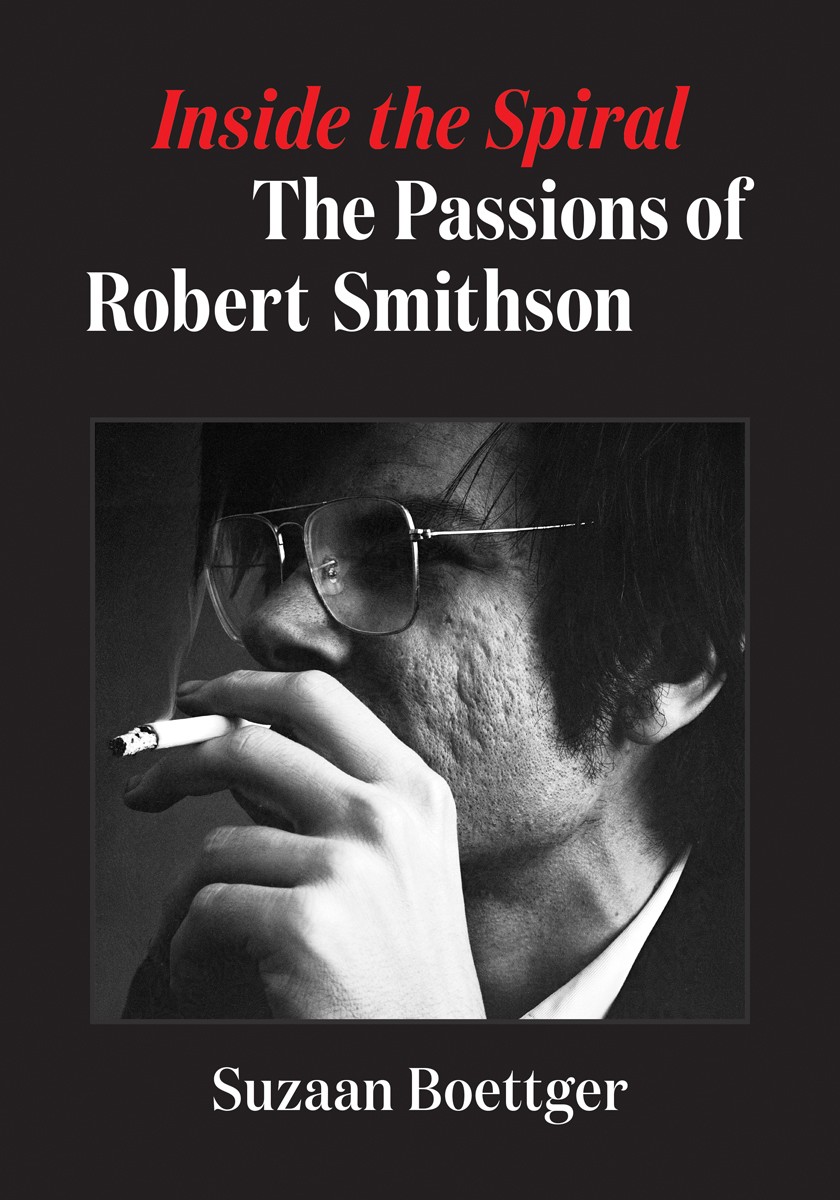Inside the Spiral: The Passions of Robert Smithson

Inside the Spiral: The Passions of Robert Smithson, by Suzaan Boettger, published by University of Minnesota Press, Minneapolis, 2023.
Inside the Spiral: The Passions of Robert Smithson marks a first, for there has been no real biography of Robert Smithson’s life and art in the past 50 years.
In Smithson’s own book, The Writings of Robert Smithson: Essays with Illustrations, edited by his wife Nancy Holt in 1979, which is the seminal source for his reflections, not just on art but on biology, Aztec and Jungian mythology, chemistry, geology and a whole range of subjects—we already sense a crossover between art and science. In these writings we learn that Smithson’s interest in salt lakes began in 1968 when he was working on the Mono Lake Site-Nonsite in California. A source he cited for generating this interest was William Rudolph’s Vanishing Trails of Atacama. Rudolph’s book, Smithson recounts, “described salt lakes (salars) in Bolivia in all stages of desiccation and filled with micro bacteria that gave the water surface a red colour. The pink flamingos that live around the salars match the colour of the water.”
Author Suzaan Boettger examines the beginnings of Smithson’s art career with what could be called a kind of psychologistic anthropology. From a Catholic family in Passaic, New Jersey, Smithson was one of the few land artists to come from the east coast. Boettger speculates on Smithson’s thoughts of being a replacement child for a brother who died before he was born. Did this significantly influence his vision and propel his approach to art? The approach to writing about Smithson is more sponge than filter, as she reflects, “My voice is conversational and there is an absence of obfuscating academic jargon. I love to play with words, and it shows.” Boettger recognizes the spiral and reddish colour of Great Salt Lake as symbolic bodily references for Smithson and she is absolutely right. Insights like these are fascinating examples of the magic and mystery of Smithson’s ambiguous views of the earth and human history. Salient facts give way to an empathetic “in-depth” look at Smithson’s early painting.
Citing Susan Sontag’s 1967 essay “The Aesthetics of Silence,” Boettger realized that this and other writings embodied a new minimalist spirit of emotional containment and scientific investigation of space that influenced Smithson’s developing aesthetic sensibility, moving him towards the land and environment as a living canvas. We might consider Smithson, like Cézanne (who wrote, “The landscape thinks itself in me, and I am its consciousness”), as a visionary who understood the many layers of process involved in the nature culture dialogue so essential to art and life; and consider the comprehensive overview that typifies Smithson’s eclectic vision and experimental process. As Les Levine recently commented to me in conversation, “It is unclear to me why a person’s sexual behaviour should be the subject of an art book. Nancy Holt did not want intimate details of Smithson’s sex life exposed. I believe their privacy should have been respected. I personally feel that Smithson’s contribution is more valuable. Whose truth is true?”
We learn that as Smithson lost interest in commercial and public gallery shows, the scale of land art provided a welcome (site and non-site) paradigm for an approach to art that responded to minimalism. Smithson’s foray into Franklin, New Jersey, and his explorations on his concept of site/non-site, including the mirror placements, are well documented here and mark tentative forays into the land that paralleled Dennis Oppenheim’s own mountain slide image, Preliminary Test for 65’ Vertical Penetration, 1970.
Inside the Spiral’s chapters are arranged into near subsectional investigations of Robert Smithson’s progress as an artist: Prehistory and Early Painting, Clandestine Fantasies, Mutation of Artistic Persona, Professional Consummation and Expansion and Returns. Suzaan Boettger’s remarkably creative deep dives into Smithson’s life are—like a process where the author transfers personal life traumas by examining Smithson’s life through this lens—a kind of therapy. An addendum found at the end of Inside the Spiral provides a selected bibliography of Robert Smithson’s library that reveals Smithson’s incredible range of interests from science fiction, to religion, to mysticism, alchemy and numerology.
You see Smithson’s overriding influence on the art of his time, for example, in the late Rodney Graham’s text he wrote on Smithson’s brain, seen in the Vancouver Art Gallery’s “A Fragment of a Greater Fragmentation,” 2003–2004. Inside the Spiral includes stunning photography of the Spiral Jetty by Steve Durtschi, a Utah pilot, and Wyatt McSpadden, who had a job at the Amarillo Ranch and captured a nighttime Amarillo Ramp photo. The recent drying up of Great Salt Lake and reduction of bird and wildlife species due to record low rainfall add a whole other dimension to Smithson’s Spiral Jetty saga and indeed all artistic pursuits in an era of climate change. ❚
Inside the Spiral: The Passions of Robert Smithson, by Suzaan Boettger, University of Minnesota Press, 2023, 440 pages, paperback, $48.99.
John K Grande is a poet, author and occasional curator. Recent books include Art, Space, Ecology; Two Views, Twenty Interviews (Black Rose/U. Chicago, 2018); Eternal Dance (Delta Press, Norway, 2022); and Arte, Espacio, Ecologia (Universidad de Sevilla, Spain, 2023).

